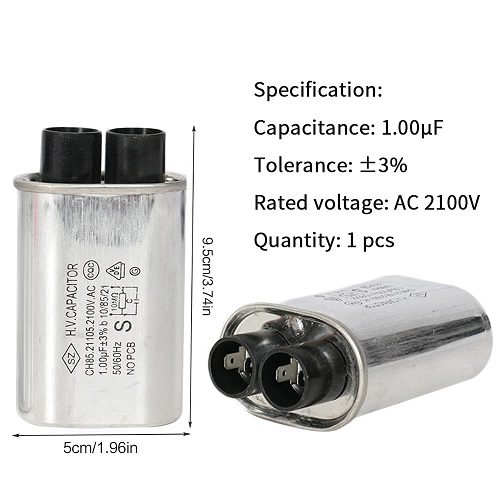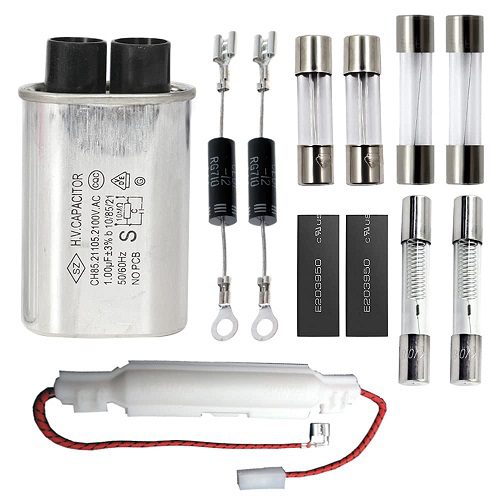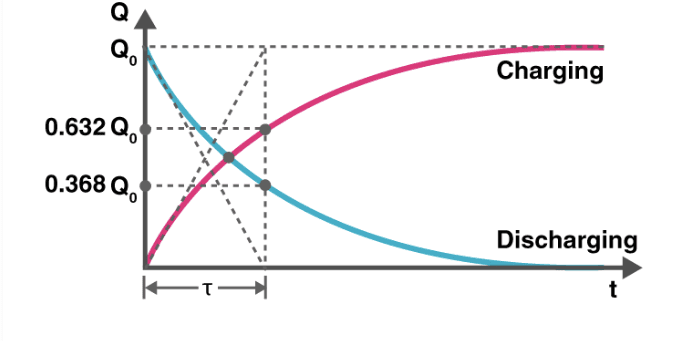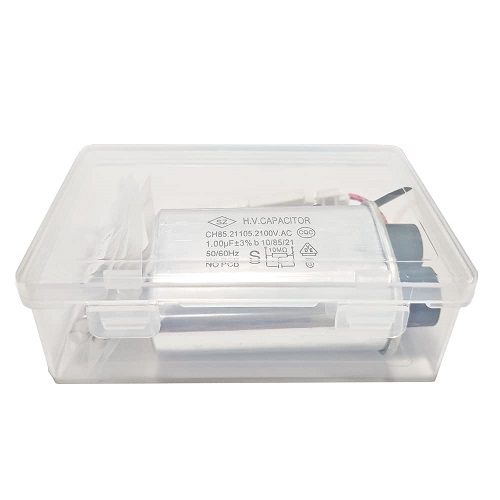If you’ve ever stared at your microwave, pondering the magical process that turns cold leftovers into piping hot deliciousness, you’re not alone. But have you ever thought about the unsung heroes behind this modern marvel? I’m talking about microwave capacitors – those tiny yet mighty components that play a vital role in the microwave’s ability to zap your food back to life. Today, we’re embarking on an electrifying journey deep into the world of microwave capacitors and their curious habit of holding onto a charge. Buckle up, because we’re about to dive headfirst into the riveting realm of capacitor discharge times!
The Basics of Microwave Capacitors
Imagine you’re at a concert, and the band is about to start playing. Before they hit the stage, they’ve got to tune their instruments and prepare for an epic show. Well, in the world of microwaves, capacitors are like the band getting ready for that electrifying performance. They’re the ones responsible for storing energy and regulating voltage – the essential backstage crew that makes the microwave magic happen.
Microwave capacitors come in different flavors, each with its own special skills. Picture ceramic capacitors as the swift sprinters of the group, rapidly charging and discharging to keep up with your microwave’s fast-paced tempo. On the other hand, electrolytic capacitors are the marathon runners, storing more energy for those longer cooking sessions.

Understanding Capacitor Charge and Discharge
Alright, hold onto your hats, because we’re about to unveil the behind-the-scenes magic! Have you ever wondered why your microwave can still give you a little shock, even after it’s unplugged? Well, it’s all thanks to those sneaky capacitors holding onto their electric charge like it’s a secret treasure.
These capacitors store electrical energy, and when the microwave is running, they’re charged up and ready to unleash their power. But when you unplug the microwave, they don’t just let go of that energy immediately – they do it gradually.
The factors influencing how long capacitors hold onto their charge are like the ingredients in a recipe for discharge. The size of the capacitor, the pathway the discharge takes through a resistor, and the voltage levels involved all play a role in this electrifying process.
Comparison Table for Discharge Times
| Capacitor Type | Discharge Time |
| Ceramic | Rapid (milliseconds to seconds) |
| Electrolytic | Moderate (seconds to minutes) |
| Variable | Can vary widely based on capacitance and other factors |
Factors Affecting Discharge Rates
Now, let’s dig a little deeper into the science. You know those different types of capacitors we mentioned? Well, their materials influence how efficiently they release their charge. It’s like comparing dancers with different styles – some glide gracefully, while others take their time with slow, deliberate moves.
Temperature also plays a role in this electric dance. Just like we move slower in colder weather, capacitors take their sweet time letting go of their charge when things get chilly. And speaking of time, age catches up with everyone – even capacitors. Over the years, they might not hold onto their charge as tenaciously as they used to, which is like watching your favorite dancer gracefully retire from the stage.

Safety Implications of Microwave Capacitors
Now, let’s talk about safety. Remember that little shock you might have felt when you touched a microwave that had just been unplugged? That’s a friendly reminder from those capacitors that they’re still holding onto their electric stash. And while these shocks might not be deadly, they can definitely give you a jolt – quite literally!
But it’s not just about post-microwave shocks. Capacitors also play a vital role in microwave safety systems. They’re like the security guards making sure things don’t go haywire. If something goes wrong – like a malfunction or a power surge – these capacitors jump into action, protecting your microwave from turning into a fiery mess. Real-life incidents have shown us just how crucial understanding discharge times can be in preventing accidents.
Measuring Capacitor Discharge Times
Okay, hands up if you’re ready to get hands-on with some electrifying science! To measure discharge times, you’ll need a few tools: a resistor, a voltmeter, and a healthy dose of caution. Remember, safety goggles are like your superhero mask in this adventure.
Step one: ensure the microwave is unplugged. Safety comes first, and you don’t want to be on the receiving end of a surprise shock. Then, connect the resistor and voltmeter to the capacitor’s terminals – it’s like putting together a puzzle, but with electric parts. Slowly but surely, you’ll watch that charge trickle away, leaving the capacitor empty and ready for its next performance.
Case Studies and Experiments
Now, let’s put on our lab coats and goggles and dive into some experimental action. Armed with curiosity and a knack for tinkering, I set out to measure discharge times for different capacitor types. It was like playing with electric puzzles, with results that were nothing short of electrifying!
Ceramic capacitors turned out to be the sprinters of the group, releasing their charge in the blink of an eye. Electrolytic capacitors, on the other hand, embraced their inner tortoise, taking their time to slowly release their stored energy. Graphs and data became my best friends, painting a vivid picture of the dance between discharge times and capacitor types.

Practical Applications and Maintenance
Now that we’re all bona fide capacitor connoisseurs, you might be wondering how to put this newfound knowledge to good use. Well, my friend, understanding discharge times is like having a secret code to microwave maintenance. It’s not just about knowing how to make things ‘zap’ in the microwave; it’s about understanding how to stay safe while doing it.
Regular inspections and replacements are the keys to a long and healthy microwave life. Think of it like giving your microwave a check-up at the doctor’s office – except instead of a stethoscope, you’re armed with knowledge about when those capacitors have finally dropped the curtain on their electric act.
Industry Regulations and Standards
But wait, there’s more! The world of microwaves isn’t a wild west of electrified chaos. There are regulations and guidelines in place to keep everyone safe. Regulatory bodies are like the referees ensuring that microwave manufacturers and technicians play by the rules. Compliance isn’t just a buzzword – it’s the foundation that prevents your microwave from turning into a lightning-spewing monster.
Conclusion
And there you have it, fellow explorers of the electrifying unknown! We’ve embarked on a thrilling journey through the captivating world of microwave capacitors and their intricate discharge times. From understanding the basics to conducting our own electrifying experiments, we’ve unveiled the mesmerizing dance between energy storage and release.
But remember, it’s not just about understanding the science – it’s about applying that knowledge to stay safe and informed. Capacitor discharge times aren’t just a curious quirk; they’re an essential factor in maintaining the safety and performance of your microwave oven.
So, as you navigate the realm of microwave maintenance, armed with the electrifying knowledge of capacitor discharge times, remember to stay curious, stay cautious, and keep those capacitors in check. After all, in this electrifying adventure, knowledge truly is power – quite literally!

